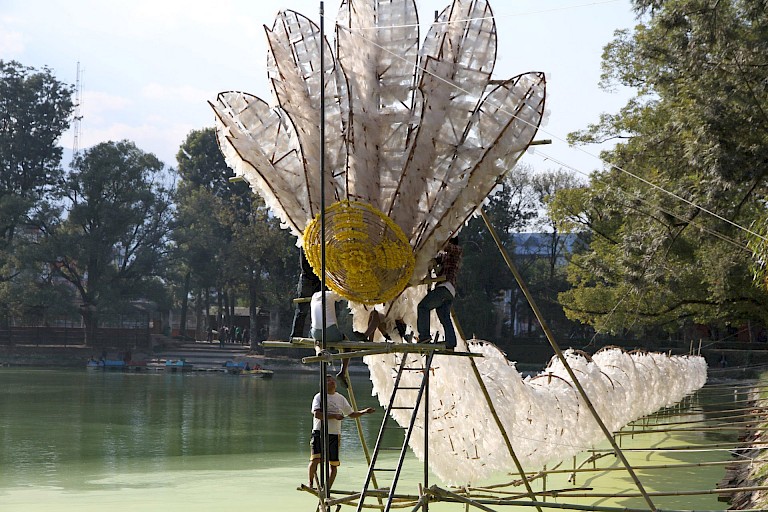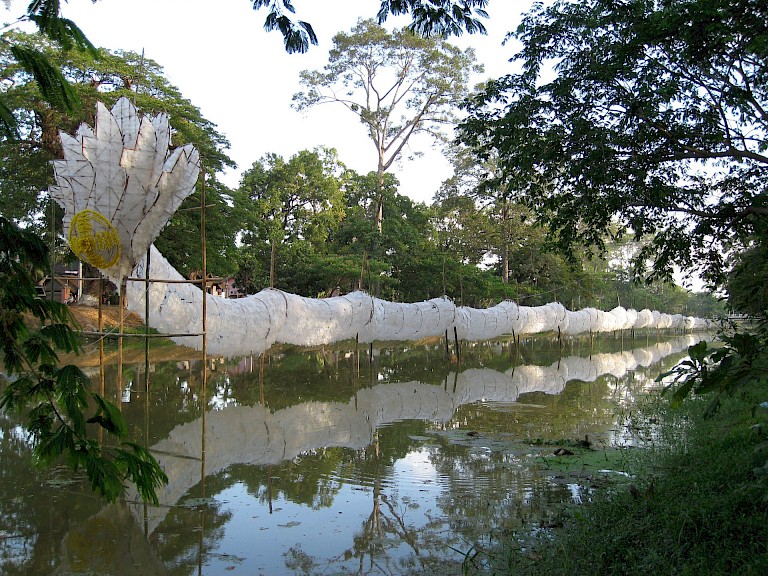



Artist Leang Seckon puts it more directly: “We hope that people, when they see this, understand that this piece was made out of rubbish and water pollution, and that, if this persists, the Naga and all that can be found in the river will disappear.”
The project also uses native beliefs and traditions to communicate its message. In South and Southeast Asian cultures and traditions, the Naga is a mythical creature that takes the form of a serpent with the power of transformation. In the Cambodian creation myth, the Naga were a race of serpents that possessed a large empire. The daughter of the Naga King married an Indian Brahmana, and from that union came the Cambodian people, who still say they are “born from the Naga.” Depictions of the Naga can be seen throughout South and Southeast Asia, especially in temple and palace architecture, highlighting their importance in local and everyday culture. In other words, the Naga is a powerful and recognizable symbol that can easily be understood by local communities.
Since its inception, Seckon has involved local communities in the creation and display of Naga, which has helped strengthen and amplify its message. Over 400 people were involved in collecting, washing, cutting, and sewing the plastic scales for Naga, and local communities and NGOs were involved in the installation of the work.
Public engagement with the work of art has also been strong. The stark white color “attracted people to come over and have a look at the creature floating above the Siem Reap River,” notes Seckon.
Its installation in both Cambodia and Nepal demonstrates how its symbolism and message are wide reaching, not limited to a single time and space. Its clear cultural references also allow the message to be interpreted within a local context by the viewer. “It is a work of art that is open and inviting,” says Seckon. “It connects the community to the environment and vice versa.”
All copyright belongs to Shanghai Academy of Fine Arts, Shanghai University.


